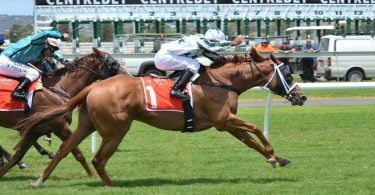The night before the second Metamoris event, UFC on Fuel Ten amassed a staggering eight submissions.
The night before the second Metamoris event, UFC on Fuel Ten amassed a staggering eight submissions. A rarity for the promotion, yet at the same time explored Brazillian Jiu Jitsu’s (BJJ) continued effectiveness as a component of Mixed Martial Arts. Metamoris exists as a fully functioning pay per view event promotion in a sport often seen for free, adding the glitz and stardom to the niche.
History comes full circle
Brazillian Jiu Jitsu is a ground style composed of bringing your opponent down, and then submitting him/her with a variety of chokes and locks. Honing its origins to Japan and later refined in Brazil, the legendary Gracie family would become its heralders. The Gracie’s would pioneer the Martial Art, setting challenges around the world to test its effectiveness. This history has ultimately come full circle when you see the last name of Metamoris’ creator Ralek Gracie.
Ralek Gracie is the son of Rorion Gracie, one of the men who founded the Ultimate Fighting Championship (UFC), which put BJJ on the world stage, and formed modern day Mixed Martial Arts. The original UFC was derived as a calling card to showcase the effectiveness of Brazillian Jiu Jitsu, with Rorion’s brother Royce winning UFC 1, 2 and 4, all the while showcasing technique and submissions to North America.
Ralek himself has competed as an MMA fighter, defeating the legendary Kazushi Sakuraba in 2007, a man known as “The Gracie Hunter.”
The beauty of victory
For Ralek, it showed him the beauty of victory, and knowing his family’s blend of tradition and competition, Metamoris holds a true Gracie ethos.
“What Metamoris is doing is basically what the Fertittas did for MMA. We’re lucky to finally have all this money behind jiu-jitsu. It’s long overdue, and I’m happy that it’s right here, right now,” so said Eddie Bravo, creator of the Tenth Planet Jiu Jitsu system and headliner of the next Metamoris Pro Brazilian Jiu-Jitsu Invitational event, Metamoris III.
The main event features a timely rematch of the 2003 ADCC quarterfinal against Royler Gracie, and is exactly the type of headline the burgeoning California promotion wants to put on. Matches the viewing public want to see filled to the brim with international stars of the sport.
A twenty minute match formulated
Competition or “sport” Brazillian Jiu Jitsu is governed by The IBJJF, who regulates a system for garnering points in a match. For example, passing a person’s guard allows two points. If a submission is not reached, then the person with the most points wins. Gracie, whilst respectful of this system, has aligned his promotion to the underpinning dynamics of Jiu Jitsu, the submission. Having seen the sports of Mixed Martial Arts and Submission Grappling allow an influx of decisions, Gracie formulated a twenty minute match, no judges.
In Gracie’s mind, combatants are freed from the weights of rules. He has watched MMA become compartmentalised, and wants BJJ to remain a pure art. Hesitation will decrease, allowing the love for laying it all on the line and taking risks for victory will increase. You’re a top of the food chain grappler, if you tap, then you tap. In Metamoris, you are praised for your performance, not the outcome.
With the introduction of UFC veteran (and BJJ Brown belt) Brendan Schaub into the promotion, Metamoris seemed to have garnered its first inklings of the MMA world. Schaub in his match against Roberto “Cyborg” Abreu continually refused to engage his opponent, drawing the ire of the crowd. Schaub stated that he wished to negate Abreus ground attack, doing so in a sport comprised of ground attacking. Metamoris have learned from this incident, omitting the judges, and introducing a yellow card system to those who fail to engage.
Schaub’s influence damaging
Schaub’s influence can be seen to be damaging, yet Metamoris is a fledgling promotion; growing pains are common at this stage. Compare the second UFC event to the modern times. It’s all a part of evolution. The incident has had its positives—attracting the attention of another UFC Contracted Fighter, Benson Henderson.
The Black belt and UFC Lightweight Champion tweeted his interest in competing, and having recently performed well in the IBJJF Pan American Championship’s, Henderson is the type of cross brand personality Metamoris can use.
Gracie has returned the format to the submission, after twenty minutes with no winner; the match is declared a draw. The submission, an art form in itself, would only be seen once in Metamoris II, in the main event of Shinya Aoki vs. Kron Gracie, with Gracie submitting the Japanese star by a crowd pleasing Guillotine choke, filled with technical grace.
Metamoris as a promotional machine have an intriguing mix of refined art. The layout of the ring, a raised platform, bone white cutting away all logos, except for a simple Metamoris logo at the centre. Bathed in bright lights, mixed with the pageantry of the Gi’s, it’s a rare aesthetic pleasure in the fight world.
Aesthetic pleasure in the fight world
For those present, the hush is hypnotic, no bardy shouts, all eyes on the action, almost reminiscent of the Pride heydays. Gracie has a clear mind of what Metamoris should look like, a paring back of all the promotional barriers, and wanting the action to be the viewer’s only concern.
As Ralek has stated: “The intention of Metamoris is to bring jiu jitsu to the world stage and to create a space for the most dynamic range of jiu jitsu practice and for the art to be able to just flourish.”
Strip back BJJ’s philosophical leanings, the lights, the cameras, the medals and you have two men attempting to show the world their dominance over the other, and that’s exactly how Ralek wants it.
What do you think about Metamoris as a sport? Have your say in the comments section below, on Facebook or on Twitter.
Photo: Edward Dalmulder








